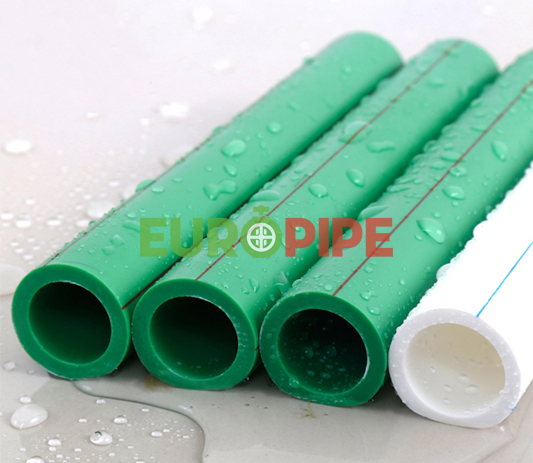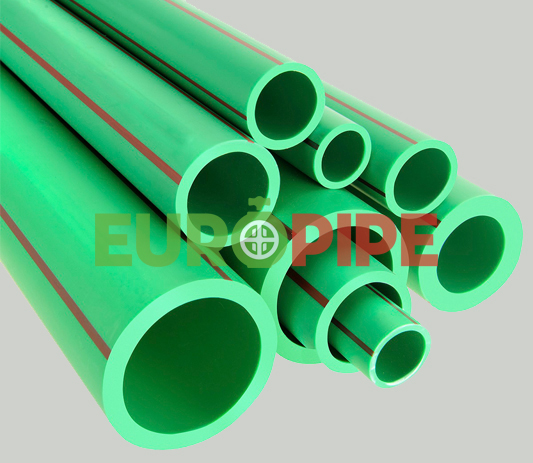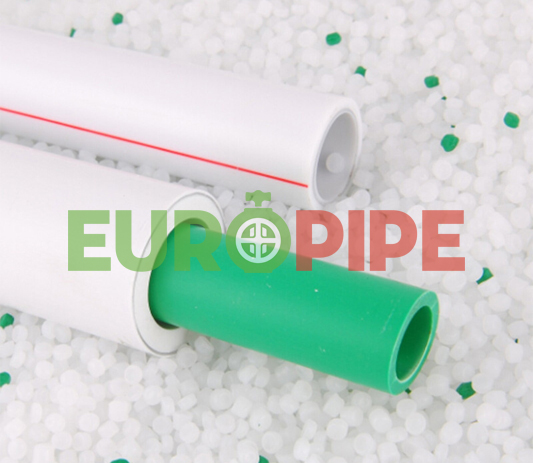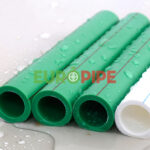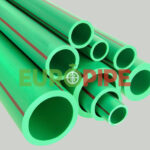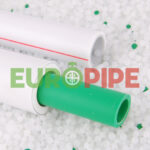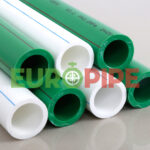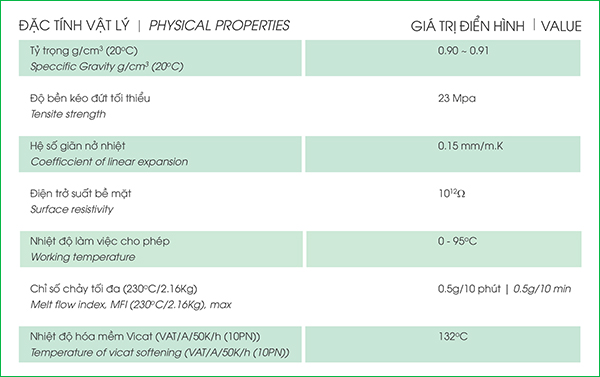GENERAL FEATURES:
- Material: Polypropylene Random.
- Size: Full DN 20mm through DN 160mm availability.
- Pressure Rating: 10 bar, 16 bar, 20 bar, 25 bar, or other nominal pressures available upon request.
- Standard: DIN 8077/ 8078:2008; BS EN ISO 15874-2:2013.
- Color: Green or white-blue stripes, Green or white red stripes. The pipe for cold water is marked with blue stripes. The pipe for hot water is marked with red stripes.
- Joint: Joining pipe and socket joint fittings by socket fusion joint, Thread joint.
OUTSTANDING PROPERTIES
- High-Temperature Resistance: The sustained working temperature is up to 95oC, the maximum transient temperature is up to 135oC.
- Heat Preservation: low thermal conductivity result in preserving heat.
- Non-toxic: no heavy metal additives would net be covered with dirt or contaminated by bacterium.
- Low Installation Costs: lightweight and ease of installation can reduce installation costs.
- High Flow Capacity: smooth interior walls result in low-pressure loss and high volume.
- Longevity: more than 50 years under proper use. In theory it.
APPLICATIONS
- Cold and hot water supply
- Heating system including flooring heating, wall
- Central air conditioning system
- Industrial liquids transportation
- Industrial air transportation
INSTALLATION GUIDE PIPING AND ACCESSORIES PP-R
Prepare Preparation: Pipe and jointing fittings; pipe cutters, specialized cutting tools, welding machine
1. Cut the pipe
Cut the pipe perpendicular to the cutter or specialized cutting tools
2. Clean pipe ends and join fittings
3. Mark
Mark, the depth to join the pipe and jointing fittings
4. Take the pipe and fittings
When the red light switches off, the heating is up to 2600, take the pipe and fittings to the welding end
5. Join the joining parts together
Hold the pipe and fittings in position for several seconds and then pull out the pipe and fittings. Join the joining parts together. Keep the pipe firmly in place after jointing.

 Tiếng Việt
Tiếng Việt

